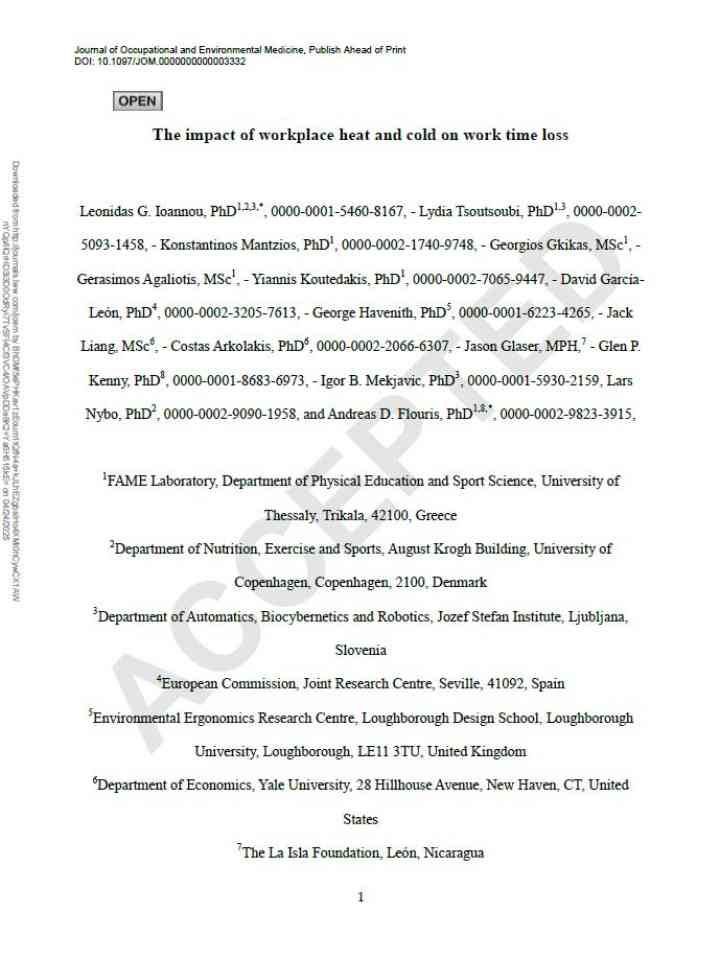The impact of workplace heat and cold on work time loss
This study investigates the impact of workplace heat and cold on work time loss. Field experiments in different industrial sectors were conducted in multiple countries across all seasons between 2016 and 2024. Hundreds of workers were video-recorded and their full shifts (n = 603) were analyzed on a second-by-second basis (n = 16,065,501 sec).
Environmental data were recorded using portable weather stations. The Workplace Environmental Labor Loss (WELL) functions were developed to describe work time loss due to workplace temperature. The WELL functions revealed a U-shaped relationship whereby the least work time loss is observed at 18 °C (64 °F), and increases for every degree above or below this optimal temperature. The WELL functions quantify the impact of workplace temperature on work time loss, extending to temperatures previously believed to be unaffected.
Explore further
